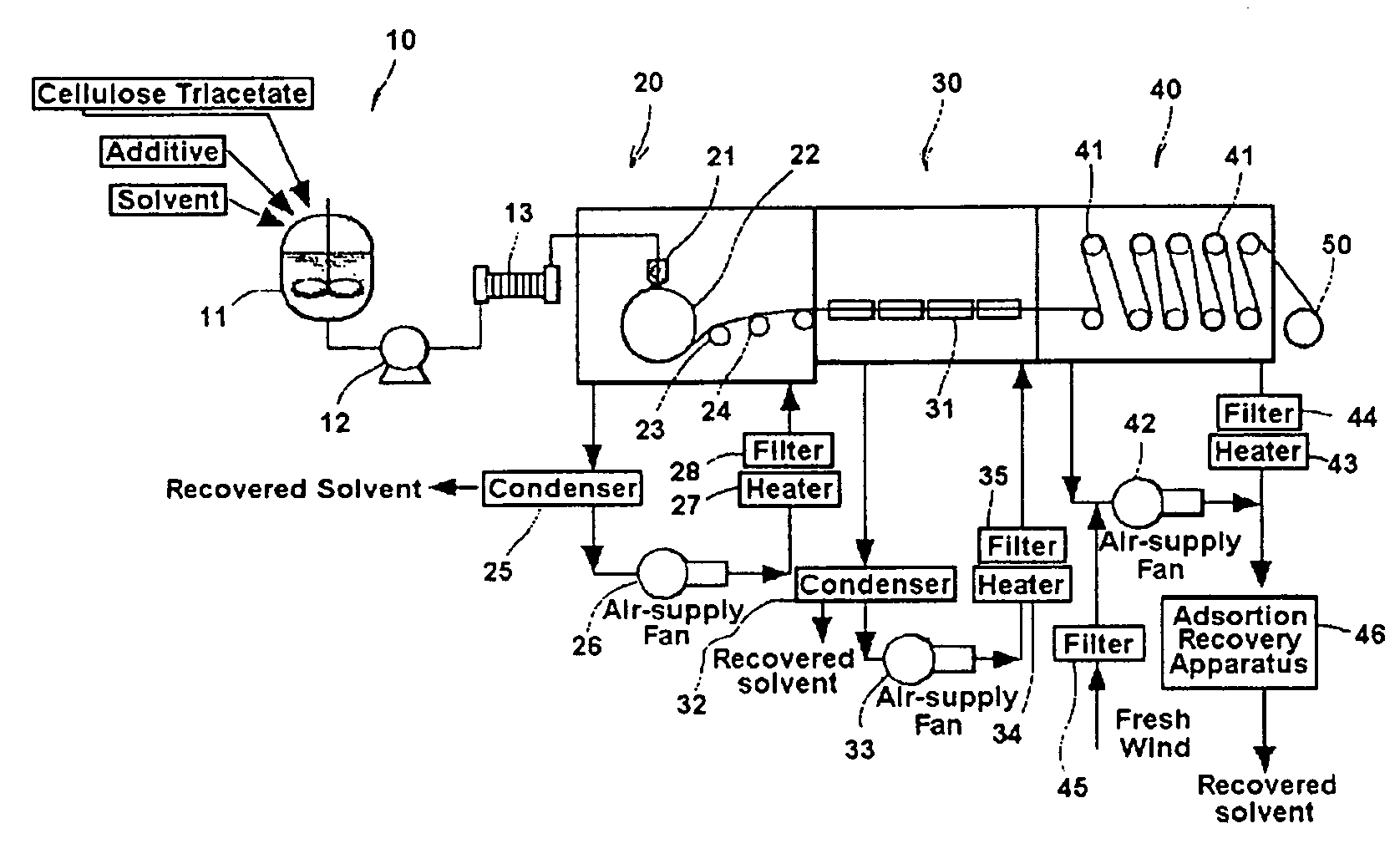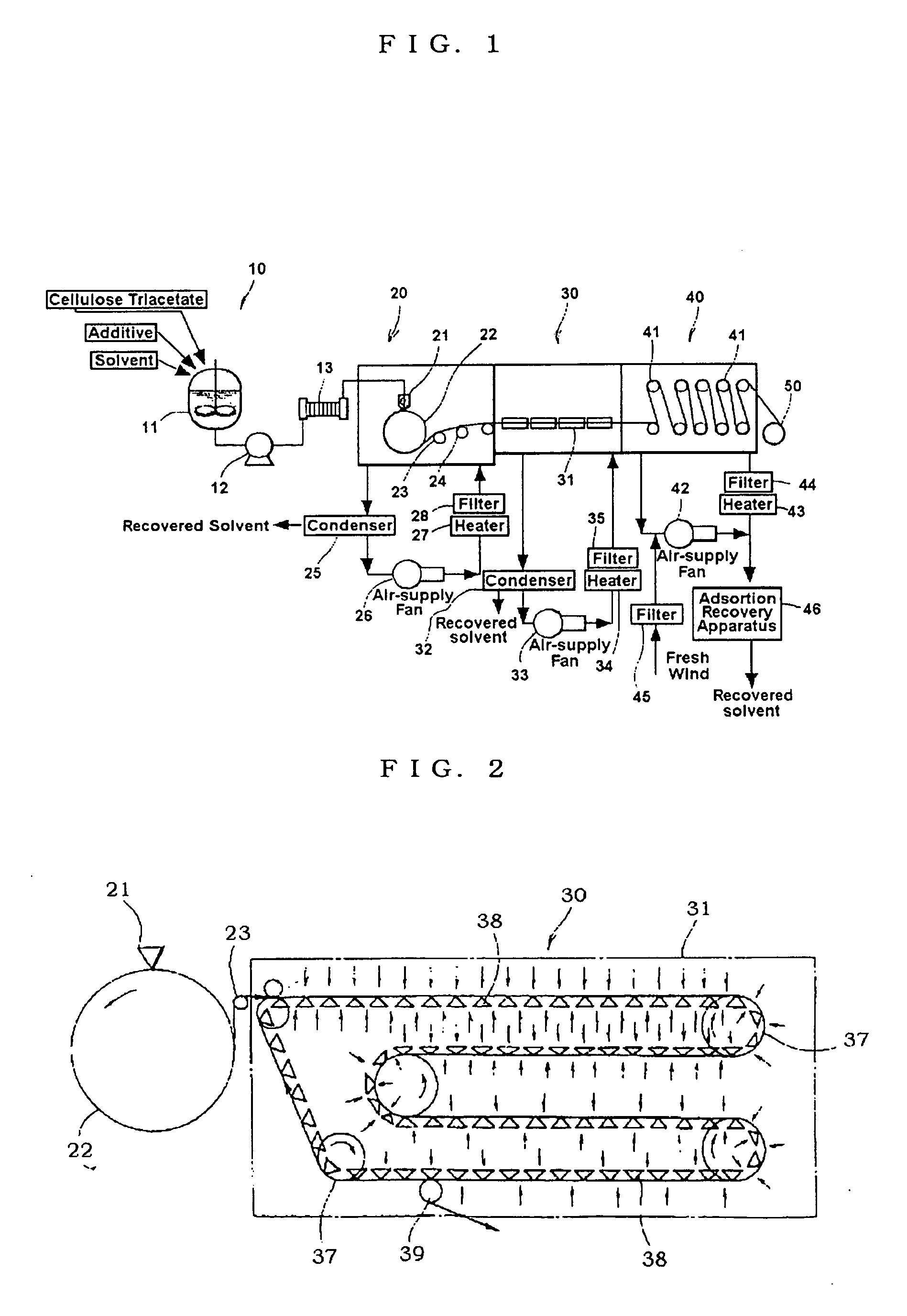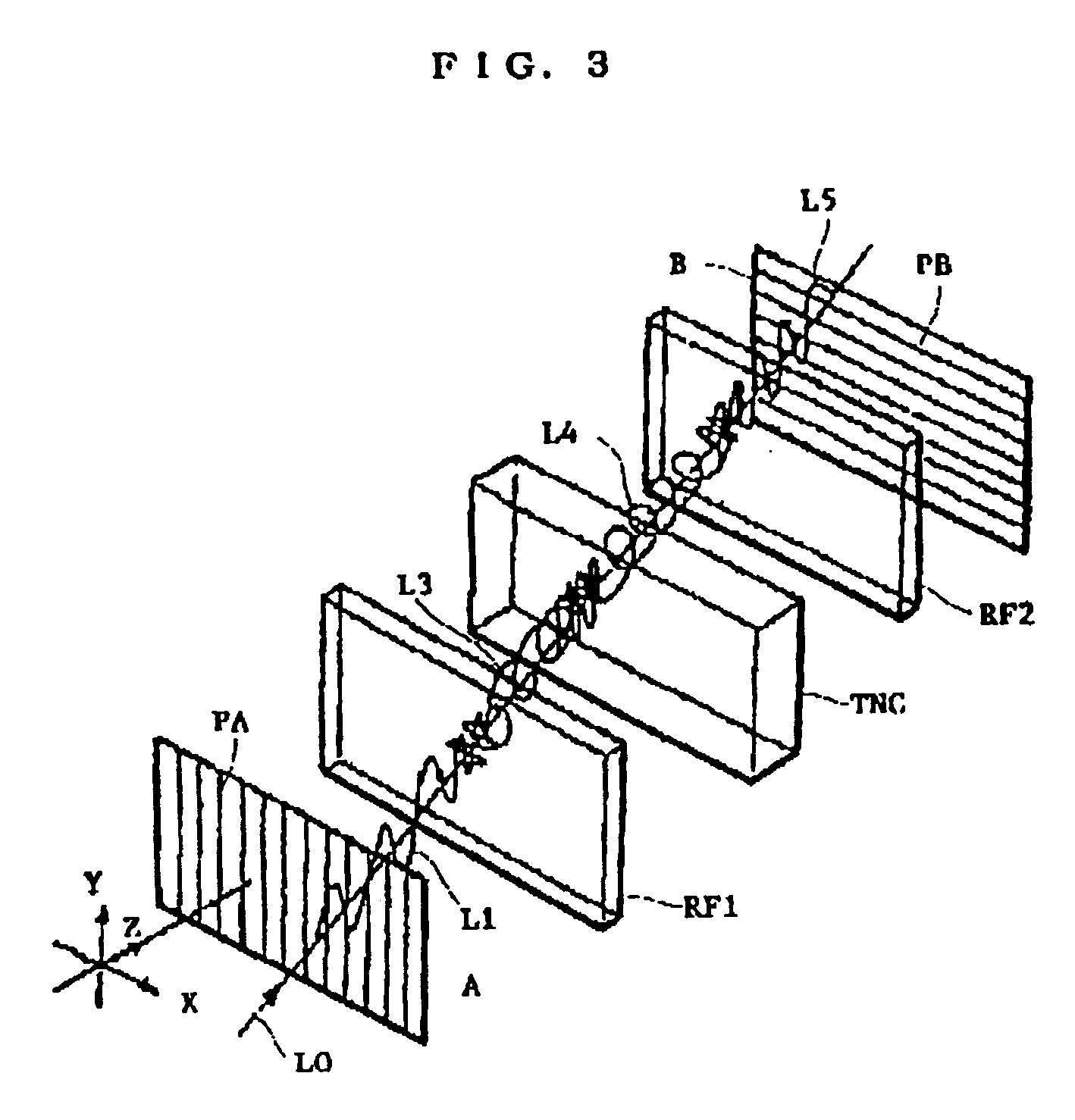Solvent casting process, polarizing plate protective film, optically functional film and polarizing plate
a technology of polarizing plate and casting process, applied in the direction of coating, flat articles, other domestic articles, etc., can solve the problems of foaming and degradation of film properties, high drying rate between casting and casting, and achieve good quality with stability and high productivity
- Summary
- Abstract
- Description
- Claims
- Application Information
AI Technical Summary
Benefits of technology
Problems solved by technology
Method used
Image
Examples
example 1
[0138] Cellulose triacetate (raw material: pulp) . . . 16 mass % [0139] (Acetylation degree: 60.9%, degree of polymerization: 305, substitution rates with acetyl group at 6-position: 0.75, average particle diameter: 1.5 mm) [0140] Cellulose triacetate (raw material: pulp) . . . 2 mass % [0141] (Acetylation degree: 61.2%, degree of polymerization: 322, substitution rates with acetyl group at 6-position: 0.72, average particle diameter: 1.1 mm) [0142] Cellulose triacetate (raw material: linter) . . . 2 mass % [0143] (Acetylation degree: 61.2%, degree of polymerization: 362, substitution rates with acetyl group at 6-position: 0.72, average particle diameter: 1.3 mm) [0144] Triphenylphosphate . . . 2 mass % [0145] Biphenyldiphenylphosphate . . . 1 mass % [0146] Benzotriazole UV absorber . . . 0.2 mass % [0147] Silicon oxide matte agent [0148] (Primary particle 20 nm) . . . 0.1 mass % [0149] Methylene chloride . . . 67 mass % [0150] Methanol . . . 9 mass % [0151] n-butanol . . . 1 mass %...
example 2
Dope C
[0172] Cellulose triacetate (raw material: pulp) . . . 20 mass % [0173] (Acetylation degree: 60.9%, degree of polymerization: 305, substitution ratio with acetyl group at 6 position: 0.85, average particle diameter 1.5 mm) [0174] Triphenylphosphate . . . 2 mass % [0175] Biphenyldiphenylphosphate . . . 1 mass % [0176] Benzotriazole UV absorber . . . 0.2 mass % [0177] Methylene chloride . . . 61 mass % [0178] Methanol . . . 16 mass %
[0179] Dope C wars prepared by dissolving and filtering the polymer solution with the foregoing composition using the high-temperature dissolution process described in Journal of Technical Disclosure 2001-1745.
Dope D
[0180] Dope D was prepared by blending the following substances with the composition of Dope C and diluting till the solid matter concentration became 18.5 mass %. [0181] Silicon oxide matte agent [0182] (Primary particle 20 nm) . . . 0.1 mass % [0183] Stripping accelerator . . . 0.1 mass % [0184] (Compounds disclosed in Example 6 o...
example 3
Preparation of Optically Functional Film
[0191] Onto one surface of the triacetylcellulose film [thickness: 100 μm, {(nx+ny) / 2−nz}×d=70 nm] prepared in Example 1, a gelatin layer (layer thickness: 0.1 μm) was applied. Subsequently, a coating solution of long-chain alkyl-modified polyvinyl alcohol (“MP-203”, Kuraray Co., Ltd.) was applied onto the gelatin layer and dried for 30 seconds by warm wind at 110° C., followed by rubbing the coated film to form an oriented film. On the surface of the oriented film, a discotheque liquid crystal was applied. In details, a coating solution containing 20 mass % of the compound TE-8 (m=4) described in JP 8-43625A, and 0.1 mass % of photoinitiator (Ilgacure 907, produced by Ciba Geigy Japan Co., Ltd.) in methyl ethyl ketone was applied by a slide coater at a coating velocity of 20 m / minute, with a coating amount of 12 cc / m2, to form the discotheque liquid crystal layer with a thickness of 2.4 μm. The discotheque liquid crystal was further oriente...
PUM
| Property | Measurement | Unit |
|---|---|---|
| boiling point | aaaaa | aaaaa |
| temperature | aaaaa | aaaaa |
| temperature distribution | aaaaa | aaaaa |
Abstract
Description
Claims
Application Information
 Login to View More
Login to View More - R&D
- Intellectual Property
- Life Sciences
- Materials
- Tech Scout
- Unparalleled Data Quality
- Higher Quality Content
- 60% Fewer Hallucinations
Browse by: Latest US Patents, China's latest patents, Technical Efficacy Thesaurus, Application Domain, Technology Topic, Popular Technical Reports.
© 2025 PatSnap. All rights reserved.Legal|Privacy policy|Modern Slavery Act Transparency Statement|Sitemap|About US| Contact US: help@patsnap.com



